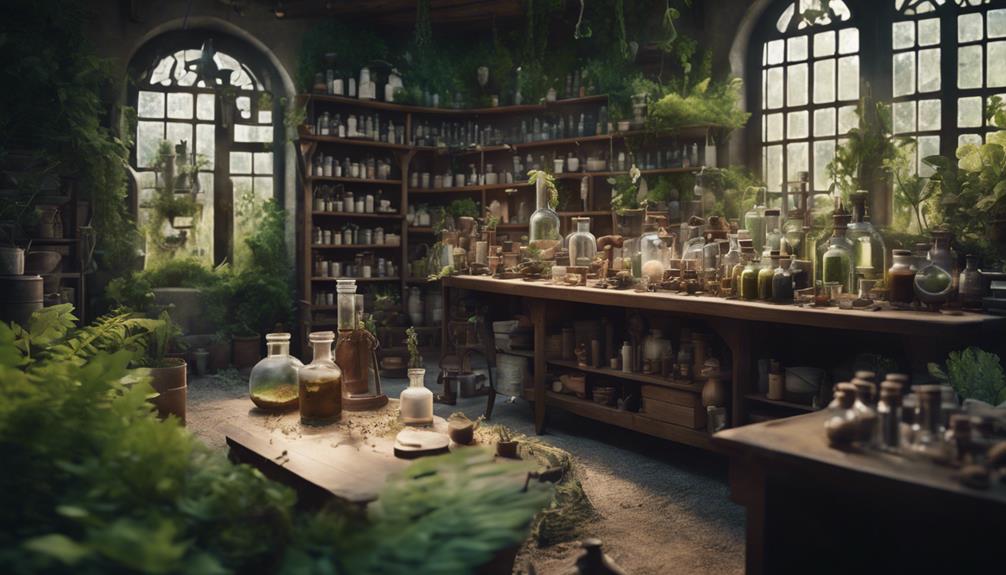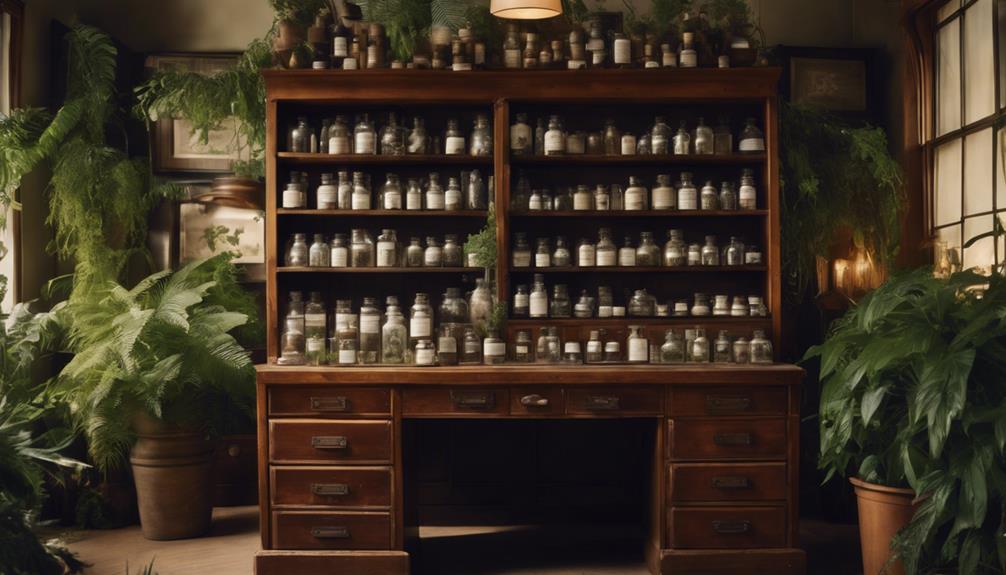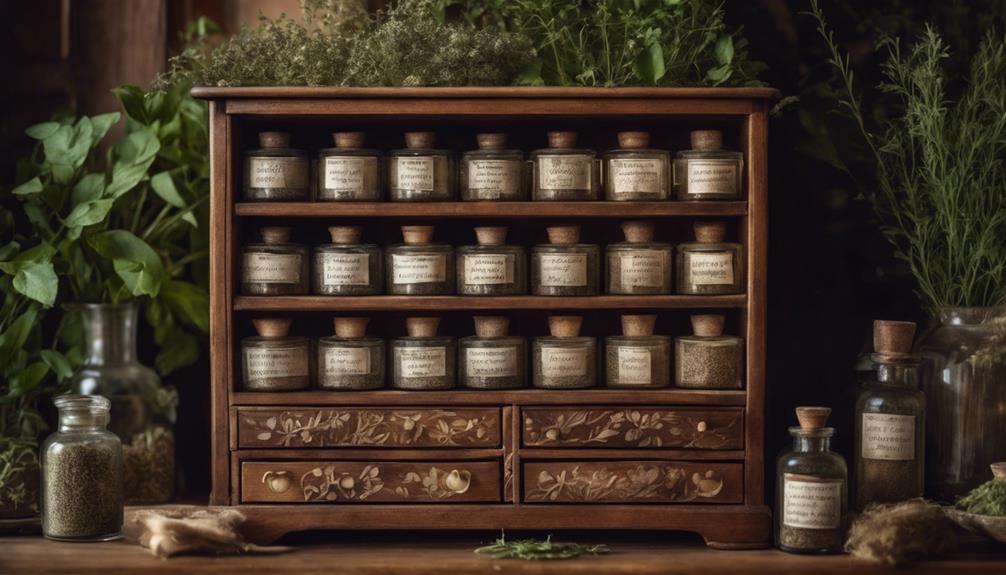Herbalism, a practice rooted in ancient traditions and wisdom, has evolved through a convergence of traditional knowledge and modern scientific inquiry, yielding a deep understanding of the therapeutic potential of plants. With roots dating back to ancient civilizations, herbal medicine has been shaped by key texts and figures like Hippocrates and Dioscorides. As modern science uncovers the bioactive compounds driving herbal remedies' mechanisms of action, integrative medicine combines conventional treatments with herbalism, offering a holistic approach to healthcare. As the boundaries between conventional and alternative medicine blur, discover how ancient wisdom meets modern science to revolutionize healthcare.
Key Takeaways
• Ancient civilizations, including Egyptians, Greeks, and Chinese, used plants for medicinal purposes, laying the foundation for modern herbalism.
• Bioactive compounds in herbal remedies, such as curcumin in turmeric, drive therapeutic effects and are validated by scientific studies.
• Ensuring the safety and quality of herbal products relies on regulatory standards, standardization, and quality control measures.
• Integrating herbalism into modern medicine offers a holistic approach to healthcare, combining the strengths of conventional and alternative treatments.
• Addressing methodological limitations in research protocols and strengthening regulatory frameworks are crucial for fully integrating herbalism into modern medicine.
Ancient Roots of Herbal Medicine
The roots of herbal medicine stretch back to ancient civilizations, where plants were first used for medicinal purposes, with evidence of herbal remedies dating back to the Egyptians, Greeks, and Chinese.
Neanderthals even used plants for medicinal purposes over 60,000 years ago. Key texts like the Ebers Papyrus and Shen Nong Ben Cao Jing document early herbal practices.
Significant contributions from figures like Hippocrates and Dioscorides in ancient Greece further solidified the foundation of herbalism.
The Renaissance period witnessed a revival of interest in herbalism, blending traditional knowledge with scientific methods. This rich history has laid the groundwork for the modern practice of herbal medicine, showcasing the enduring power of ancient wisdom in contemporary healthcare.
The Science Behind Herbalism

Herbal medicine's ancient roots, although rooted in traditional practices, have evolved to incorporate scientific understanding, with bioactive compounds like alkaloids and flavonoids driving the mechanisms of action in herbal remedies. These compounds interact complexly, resulting in the therapeutic effects of herbal remedies.
For example, turmeric's curcumin compound has been extensively studied for its anti-inflammatory properties. Studies have validated the efficacy of specific herbs like Artemisinin and St. John's Wort, demonstrating the potential of herbal medicine in modern healthcare.
As research continues to uncover the science behind herbalism, the integration of traditional knowledge with modern scientific methods holds promise for the future of healthcare.
Ensuring Safety and Quality
Quality control and regulatory standards are essential components in ensuring the safety and efficacy of herbal products. The lack of universal regulation in the herbal industry leads to variability in product quality, which can result in inconsistent potency, purity, and safety, posing risks to consumers.
Regulatory agencies, such as the FDA and EMA, play an important role in ensuring the safety and efficacy of herbal products. Standardization of products, labeling, and manufacturing processes are critical in minimizing risks associated with herbal remedies.
Moreover, enhanced regulatory mechanisms can address issues related to dosage standardization, adulteration, and contamination. By establishing and enforcing strict quality control measures, the herbal industry can provide consumers with safe and effective products.
Integrating Herbalism Into Modern Medicine

As the boundaries between conventional and alternative medicine continue to blur, a growing number of healthcare practitioners are recognizing the potential benefits of integrating scientifically validated herbal remedies into modern medical practice. This integration offers a holistic healthcare approach, combining the strengths of both worlds.
Personalized medicine, which aims to tailor herbal treatments to individual genetic profiles, is a promising area of research. Integrative medicine, which combines conventional treatments with complementary therapies like herbalism, is gaining popularity.
Challenges and Future Directions
Despite the growing recognition of herbalism's potential, the field still faces numerous challenges that must be addressed to fully realize its integration into modern medicine. To overcome these hurdles, several key areas require attention:
- Methodological limitations: Developing standardized research protocols to guarantee consistency and comparability across studies.
- Standardization and quality control: Establishing universal standards for herbal product manufacturing and quality assurance.
- Regulatory frameworks: Strengthening regulatory bodies to secure safety, efficacy, and truth-in-labeling.
- Education and awareness: Promoting accurate information and responsible use of herbal remedies among consumers and healthcare professionals.
The Importance of Regulation

Effective regulation is essential to ensuring the safety, efficacy, and reliability of herbal products. It provides a framework for manufacturers to adhere to, thereby minimizing the risk of contamination, adulteration, and misinformation. Without regulation, herbal products can be compromised, leading to potential harm to consumers.
Regulatory agencies, such as the FDA and EMA, play a pivotal role in ensuring that herbal products meet specific standards. This includes verifying the identity and purity of ingredients, as well as monitoring labeling and advertising claims. By establishing and enforcing standards, regulation helps to build trust among consumers and healthcare professionals, ultimately promoting the responsible use of herbal remedies.
Empowering Consumers

Consumers play an essential role in driving the demand for high-quality herbal products. Their awareness of regulatory standards and responsible use is pivotal in promoting a safe and informed herbal medicine market. Empowering consumers through education and awareness is vital in promoting a responsible and sustainable herbal industry.
This can be achieved by:
- Providing clear labeling and instructions on herbal products
- Educating consumers on potential interactions with medications and health conditions
- Promoting responsible sourcing and sustainable harvesting practices
- Encouraging open communication between healthcare professionals and consumers about herbal remedies
Frequently Asked Questions
Can Herbal Remedies Interact With Prescription Medications?
Herbal remedies can interact with prescription medications, potentially causing adverse effects or reducing their efficacy. This is because herbs can alter the body's metabolism of medications or interact with their mechanisms of action.
For instance, St. John's Wort can decrease the effectiveness of certain antidepressants, while grapefruit juice can increase the blood levels of certain medications.
It is crucial for individuals to consult with a healthcare professional before combining herbal remedies with prescription medications to guarantee safe and effective treatment.
How Can I Find a Qualified Herbalism Practitioner or Doctor?
Did you know that approximately 80% of the global population relies on traditional herbal remedies as a primary source of healthcare?
To find a qualified herbalism practitioner or doctor, start by researching professional organizations like the American Herbalists Guild or the National Certification Commission for Acupuncture and Oriental Medicine. Look for practitioners certified in herbalism or traditional Chinese medicine, and check online reviews or ask for referrals from trusted healthcare professionals.
Are Herbal Supplements Suitable for Pregnant or Breastfeeding Women?
Pregnant or breastfeeding women should exercise caution when considering herbal supplements. While some herbs may be safe, others can stimulate uterine contractions, induce labor, or affect fetal development.
Additionally, herbal supplements can interact with medications or exacerbate underlying health conditions. It is crucial for pregnant or breastfeeding women to consult a qualified healthcare provider before taking any herbal supplements to guarantee safe and informed use.
Can Herbalism Be Used to Treat Mental Health Conditions Like Anxiety?
Herbalism has been explored as a potential treatment for mental health conditions like anxiety. Certain herbs, such as passionflower, kava, and ashwagandha, have shown promise in reducing anxiety symptoms.
However, more research is needed to fully understand their efficacy and potential interactions with conventional medications. Standardized extracts and controlled trials are essential to validate the therapeutic potential of herbal remedies for anxiety treatment.
Do Herbal Remedies Have Any Environmental Impact or Sustainability Concerns?
Moreover, the environmental impact of herbal remedies is a growing concern. The large-scale harvesting of wild herbs can lead to over-exploitation and habitat destruction. Additionally, the increasing demand for herbal products contributes to deforestation, water pollution, and energy consumption.
Sustainable practices, such as organic farming and responsible sourcing, can mitigate these effects. Moreover, reducing waste and promoting eco-friendly packaging can also minimize the ecological footprint of herbal remedies.
Conclusion
As the ancient art of herbalism converges with modern science, the synergy fosters a holistic approach to healthcare.
Like a masterful chef combining disparate ingredients to create a harmonious dish, the integration of herbal remedies into conventional medicine requires a delicate balance of traditional wisdom and scientific rigor.
By addressing the challenges and limitations of herbalism, the future of healthcare can be flavored with the richness of ancient knowledge and the precision of modern science.










